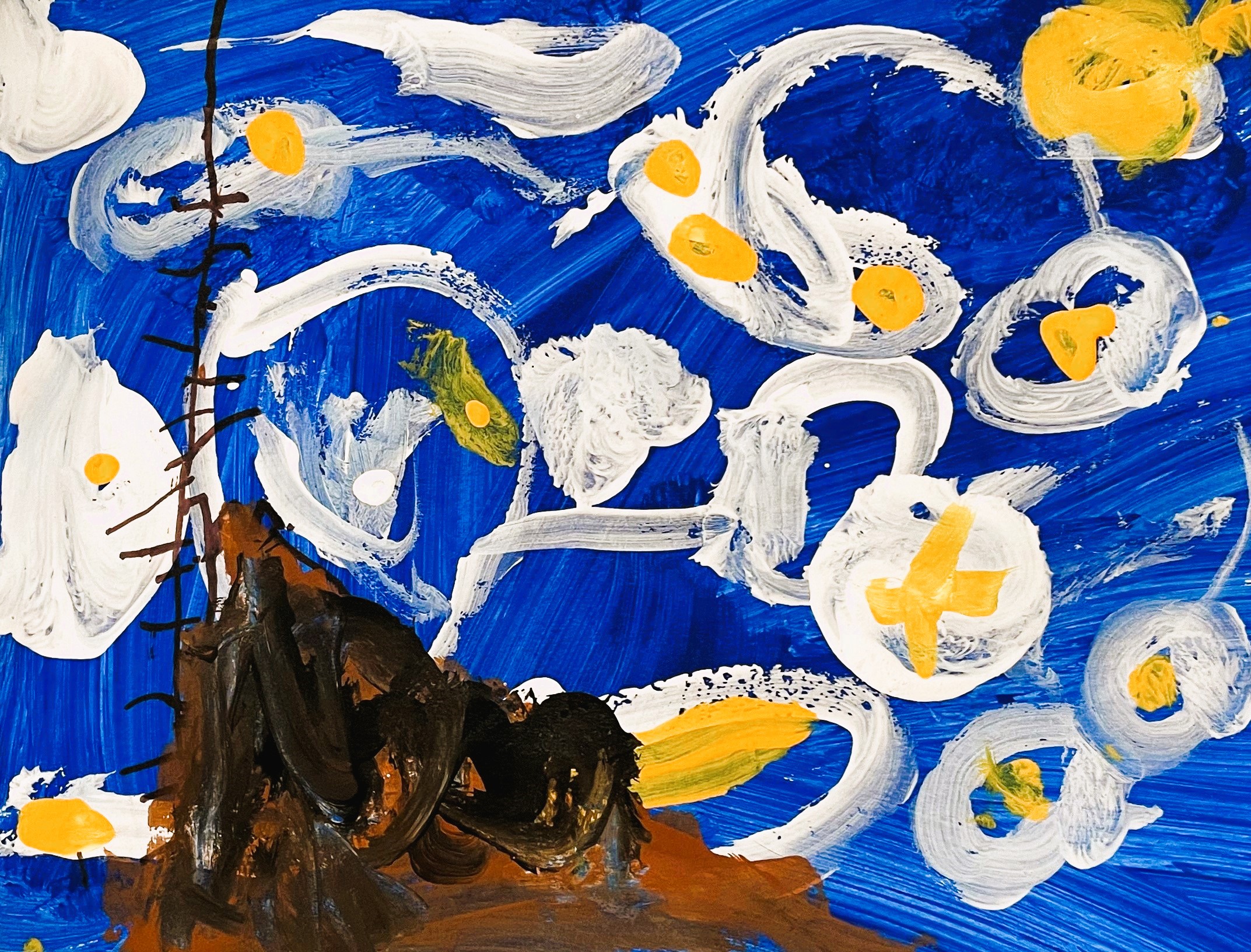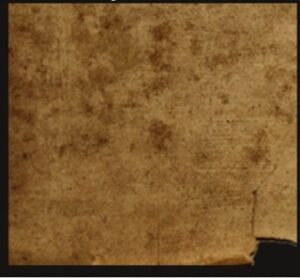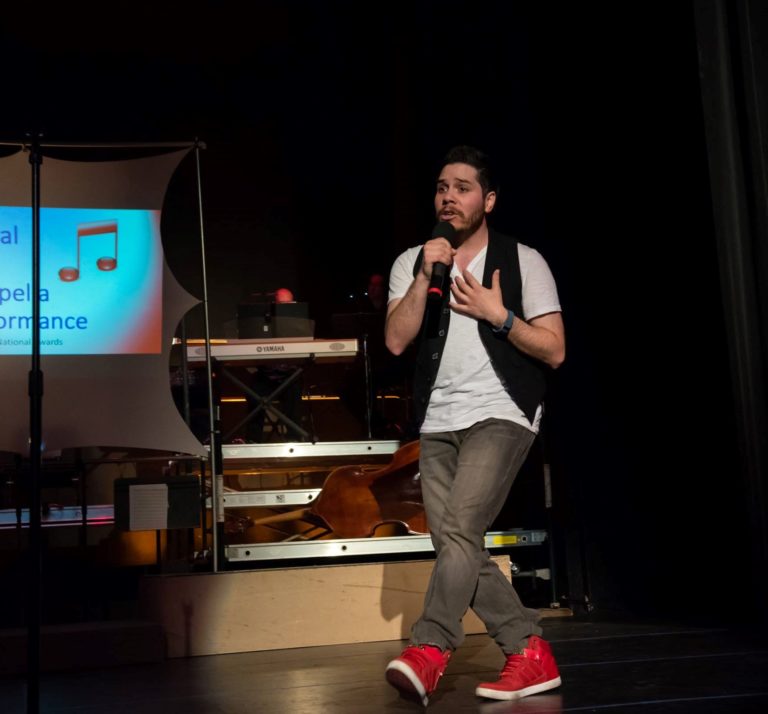By Juliana Olivarez
Teachers in Class B at the Child-Parent Centers’ Coronado Head Start in Tucson, Arizona, observed that every time they used paint as a provocation, the children would do one of two things. One, children would mix so many colors that the end result was various shades of brown. Two the children would layer so much paint or water that the end result was torn paper. Both of these left the children feeling frustrated.
Creating a Plan
During a curriculum planning session, teaching staff shared their own frustrations regarding how to support the children with slowing down and truly exploring paint. Teachers expressed fear in the following areas:
- Children becoming frustrated with paint because they only made brown.
- Children becoming frustrated with the paint because they use too much water or layer on the paint, tearing their paintings.
- They shared their biggest concern was using any types of paint due to the mess, ruining the children’s clothes and having upset parents, and their own lack of familiarity with the medium.
We began with mixing paint and creating hues. We started with teacher/coach agreements.
- The teaching staff will remove all the paint from the studio.
- Teachers will introduce primary colors only and provide those three colors in the studio using brushes, paint, and paper only.
- The teaching staff will introduce secondary colors by mixing primary colors together.
- The teaching staff will introduce hues by mixing white with the primary colors.
- The coach will seek professional development opportunities to support the teachers’ paint exploration.
- The coach will research developmentally appropriate paint and supplies to enhance painting experiences for children.
Teacher Sandra began with mixing colors to create new colors and moved to mixing colors to cause hue variations. Next, the children began to explore on their own.
Bringing in an Expert
The teaching staff met with artist Albert K who provided a professional development opportunity around working with children, specifically related to painting. Teacher Sandra shared, “We learned about the elements of painting, line, value, shape, texture, contrast, warm and cool colors, etc.”
“We were given the time to explore and mix paints, use a variety of materials to paint with, and even added different substances to paint to create different textures.”
Everything they learned, they brought back to the classroom.
During each child’s parent conference, teachers let parents know that their children would be using acrylic paints in the classroom. They asked parents to be mindful of the clothing they would send their children to school in as these paints do not wash off as well as other types of paint and they dry quite a bit faster as well. Next, the teaching staff offered the children a variety of different colors of acrylic paint.
Next Level
The coach challenged the teachers to introduce the children to different brushes, how to create different lines, and to use provocations with the children. The teaching staff introduced brushes in a variety of sizes. The teaching staff showed the children how to make different sizes of lines, and how to make curves and swirls. The children were then given time to practice on their own.
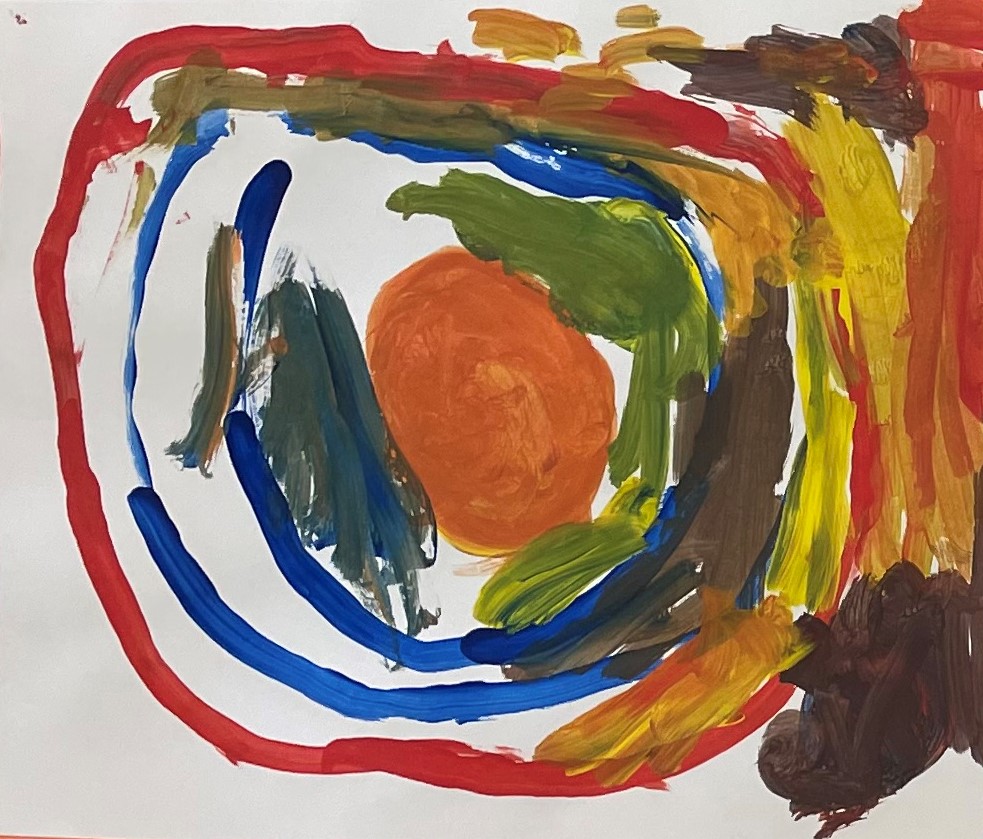
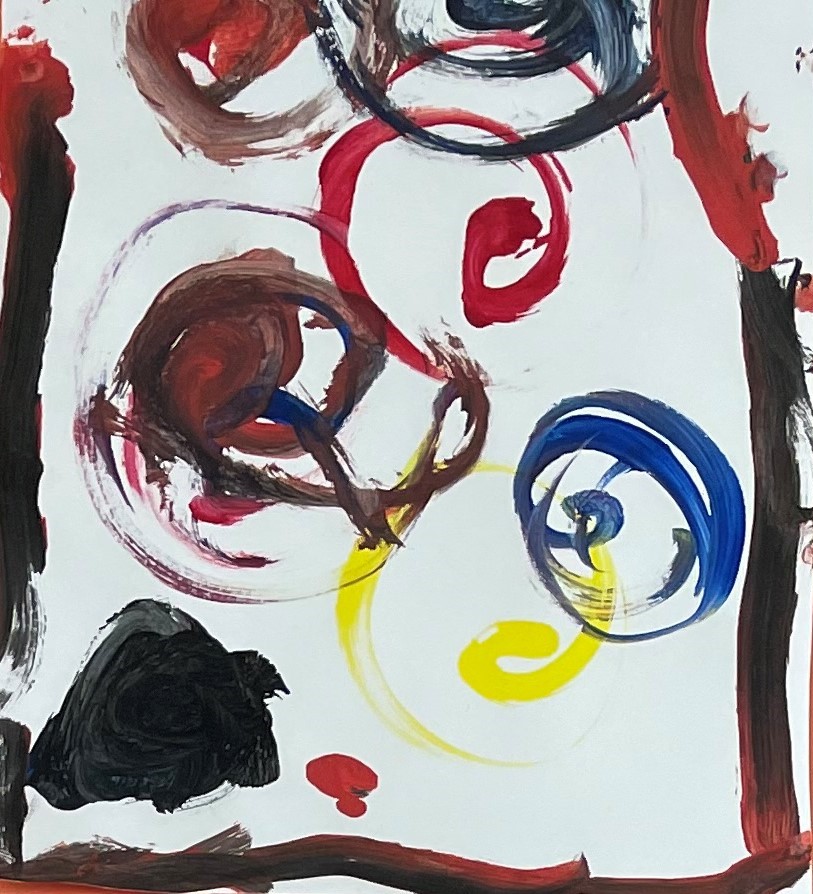
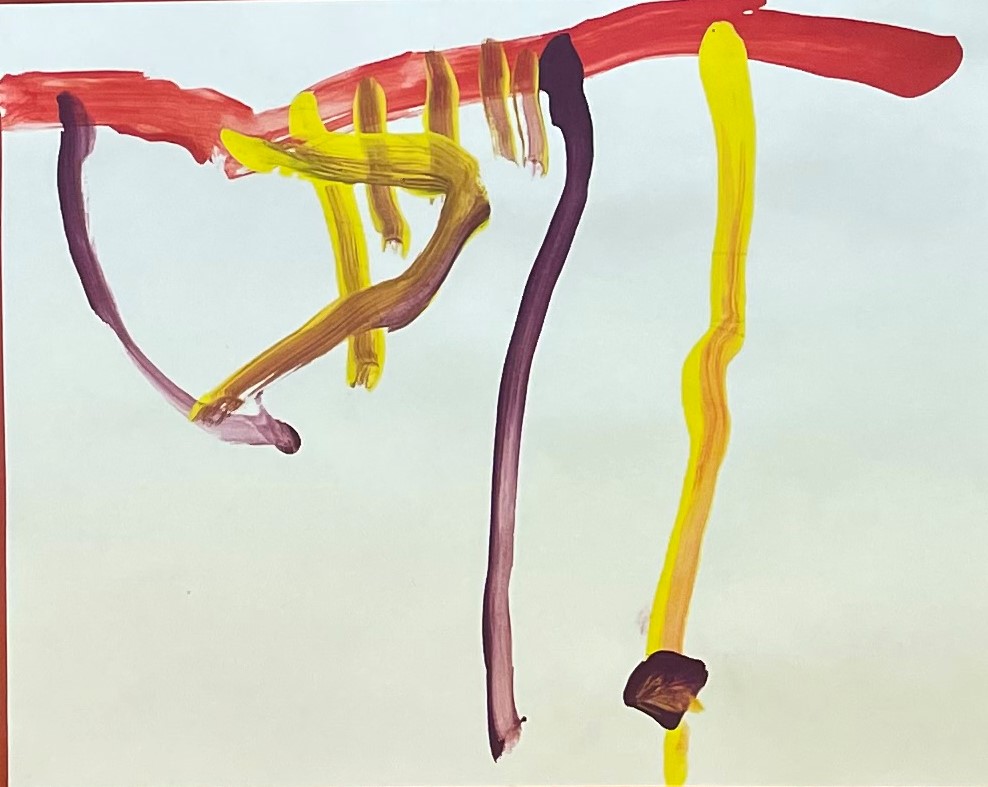
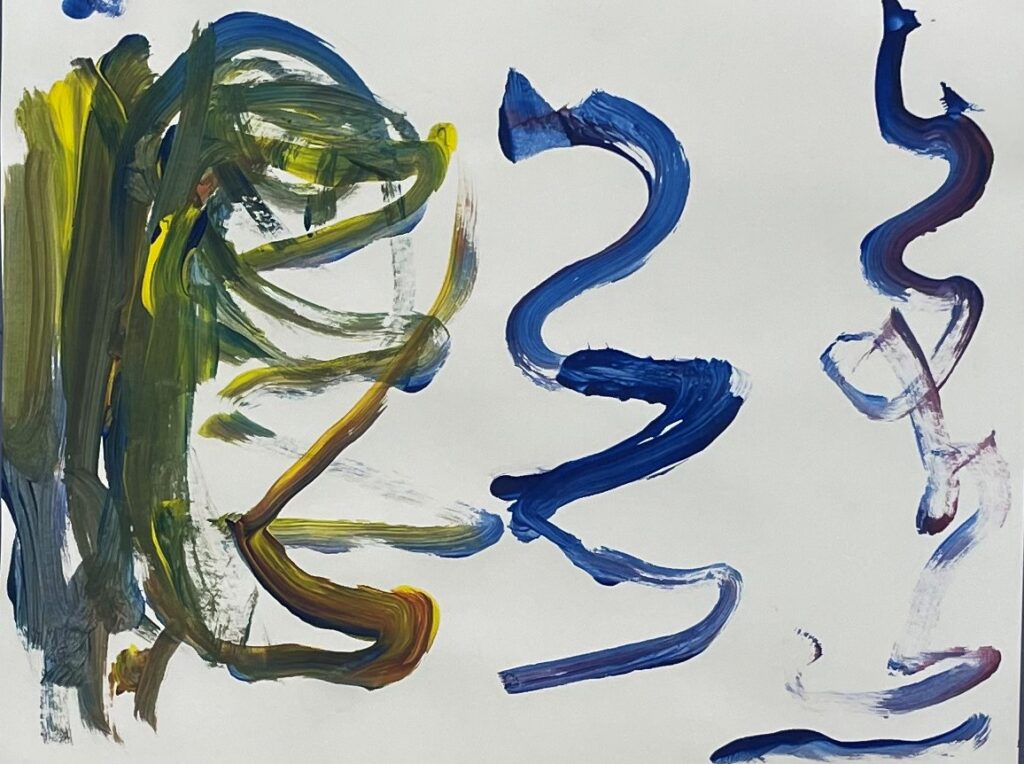
The teaching staff would set the studio up with a provocation so that it was ready for the children to come and paint. First, they offered the children real-world items such as plants or flowers to try and replicate. Next, they offered literacy provocations. Finally, they used questions as a provocation. For example, they asked the children if seasons could be represented using paint. The children rose to the task and painted their versions of the seasons.
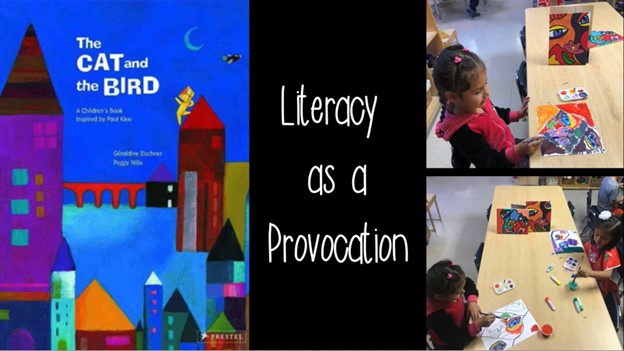
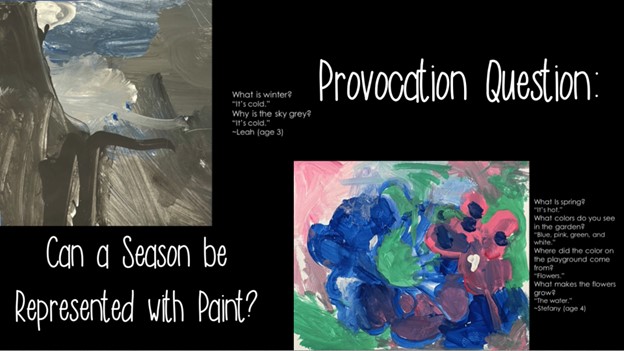
During the pandemic, the teachers didn’t want to lose their momentum around the use of paint. The teaching staff created paint kits for the parents to pick up to be used during virtual class time. The children would each be at home with their paint smock on and their paint materials in front of them, and the teachers continued to teach the children about mixing colors and hues as well as using different techniques. Parents were amazed at how well their children were able to paint.
Expanding Horizons
The teaching staff were then challenged to study famous artists. They have studied the techniques of Pablo Picasso, Frida Kahlo, and most recently Vincent van Gogh. They have read books and watched short video clips about these artists. Children were given the opportunity to recreate some of their paintings. The teaching staff put out images of van Gogh’s “Sunflowers” painting and “The Starry Night” painting which the children recreated.
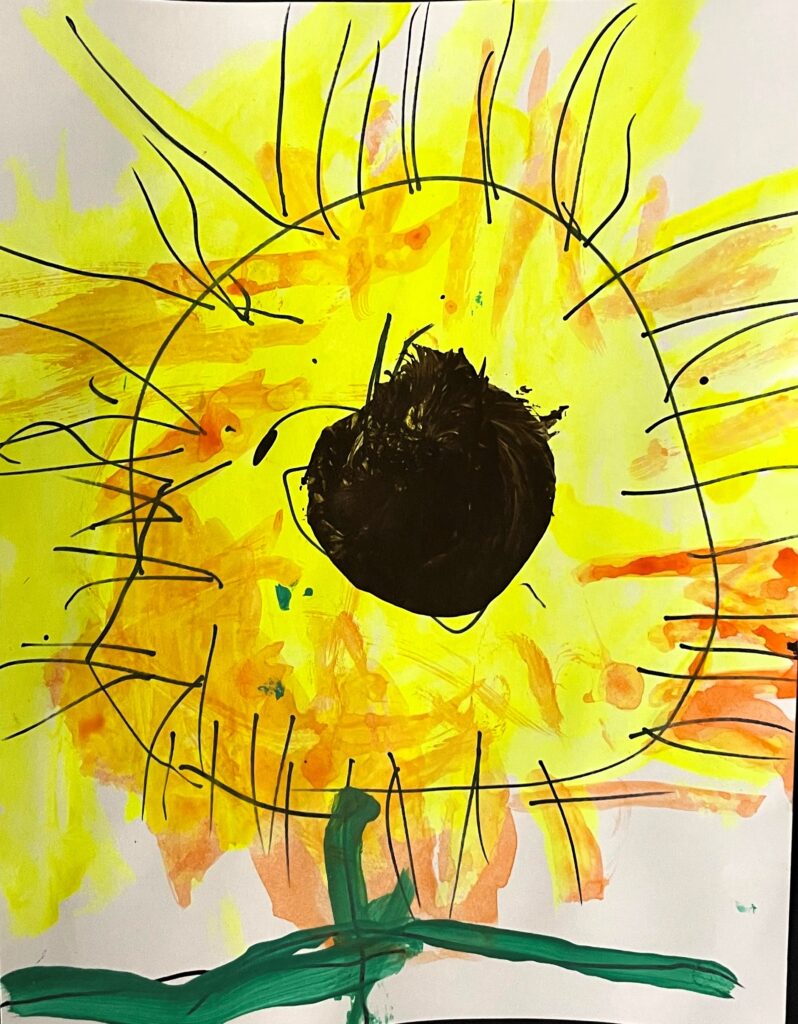
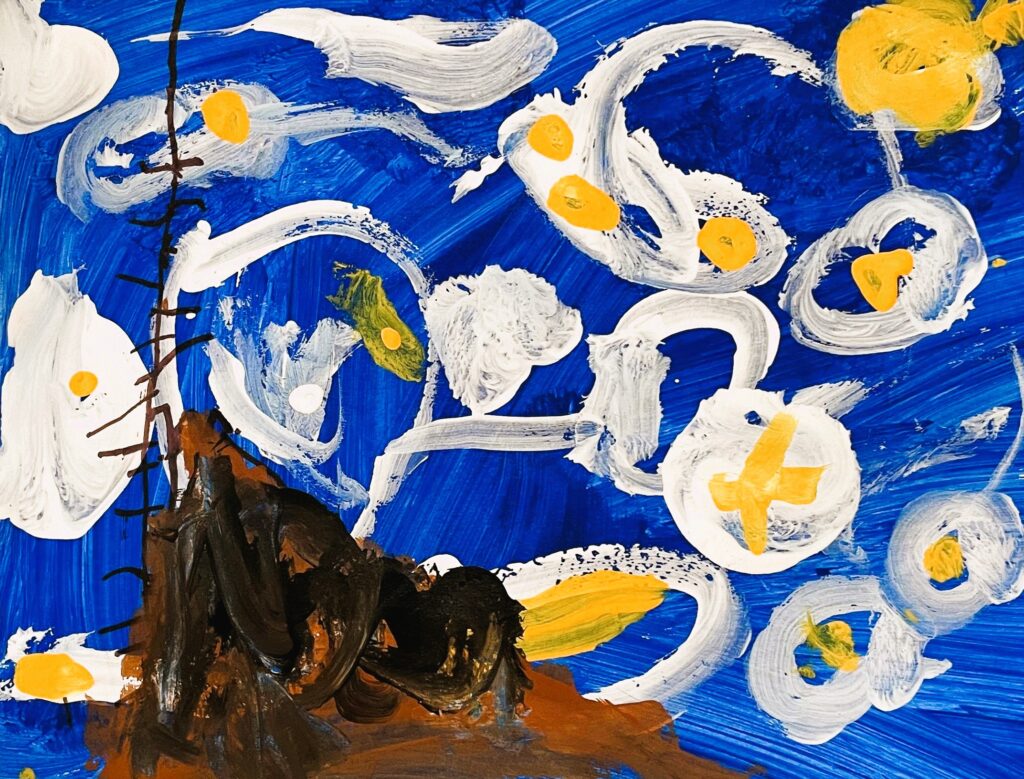
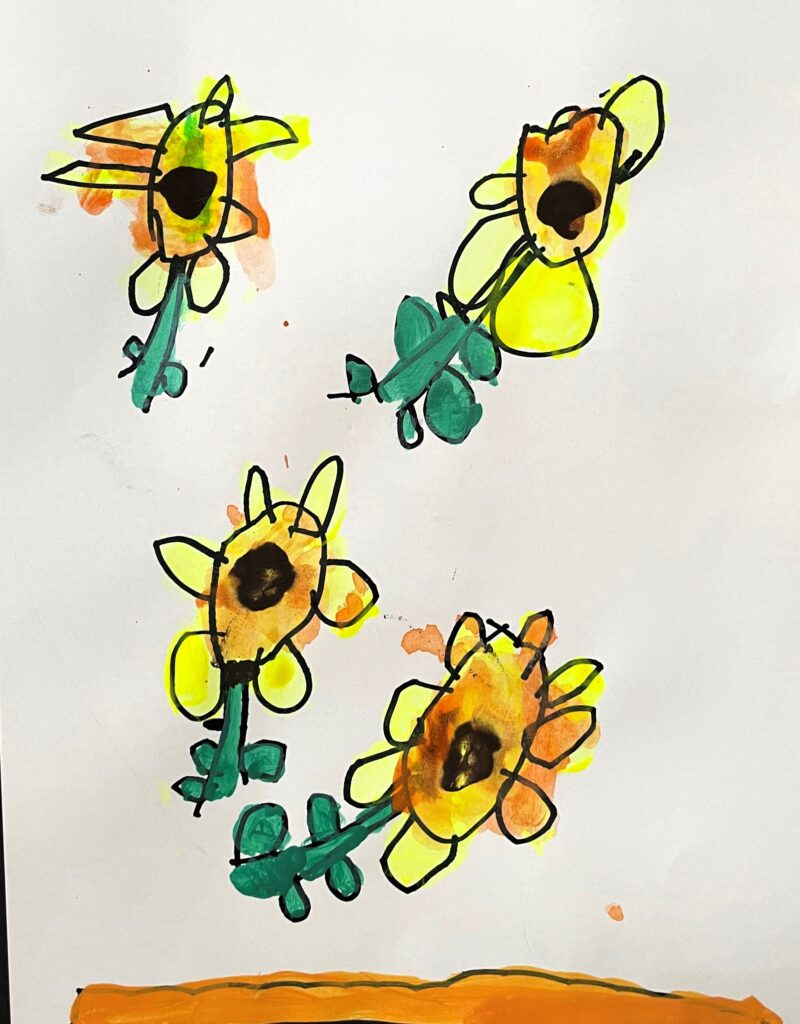
The children were then given the opportunity to continue their learning by taking a field trip to the Immersive van Gogh Experience. This experience increased their love of painting and their excitement for learning about van Gogh. After attending this field trip, the teaching staff revisited it with the children. The teachers asked the children, “What did you like about the van Gogh Experience?” Several children responded with:
“My favorite is the bedroom.”
When asked why, Gio said: “He has a bed just like me.”
Harper responded: “I could touch it. His bed is real.”
Several children got into a discussion about the flower vases. They determined that the flower vases were a favorite.
Cataleya: “I like the pink ones best.”
Ileana: “I liked to watch when the flowers would change.”
At the end of the discussion, the children all agreed that being in the immersive room was “better than a favorite.” They rapidly began saying:
“I liked his paintings on my shirt.”
“I liked the music.”
“I liked the stars in the night.”
And “I liked the train that zoomed around us.”
This was a spark needed to deepen their love for painting.
The children continued to explore using paint in different ways. Marble painting, puff painting, fork painting, etc. One child became interested in what would happen if you put paint in the middle of the paper and then folded it in half. She tried it out and was so surprised to find that the image created was the same on both sides. This was a great opportunity to talk about symmetry and what it means. She made several beautiful paintings this way, and she inspired several other children to try it as well.
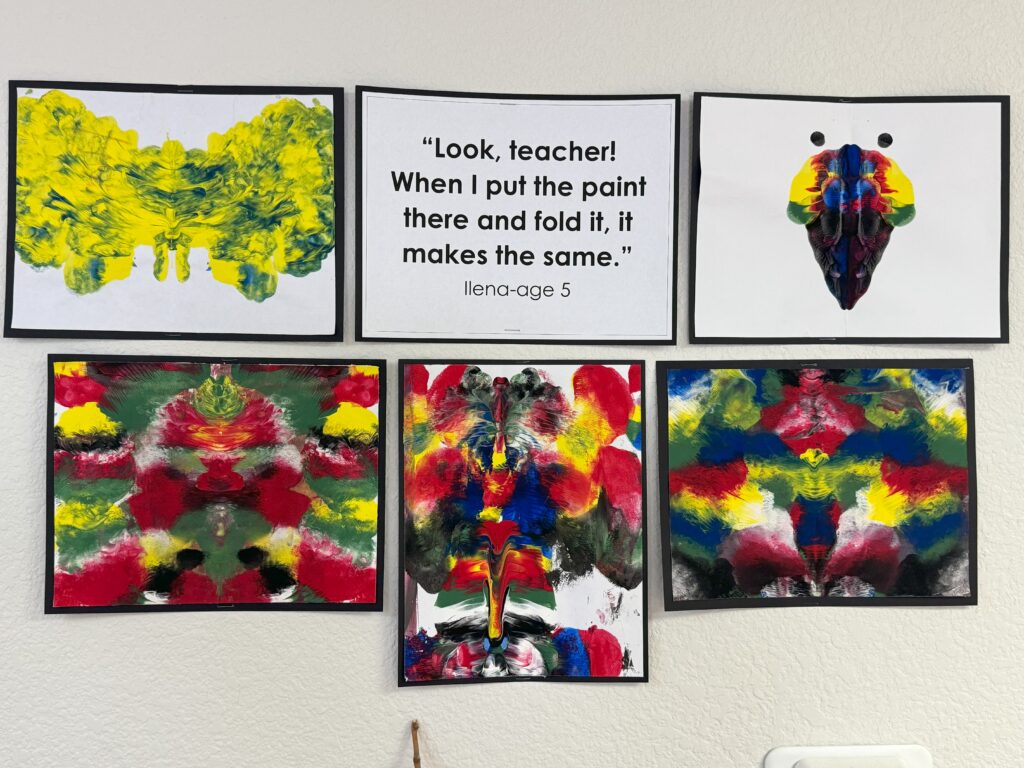
At the same time as the children were learning about van Gogh, a teacher brought in images she had taken during several hikes in the desert to share with the children to discuss what they knew about the desert they live in. The children were very interested in the images of the saguaros. They wanted to draw them. The teachers worked one-on-one with the children to help them slow down and draw their own saguaro.
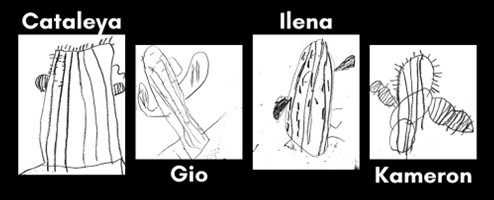
They did this experience three separate times. Finally, after the third drawing, the children used liquid watercolors to paint their cacti. Several children revisited their three drawings. They were asked which drawing was their favorite, what was similar and different in their drawings, and why did all of their drawings have two arms.
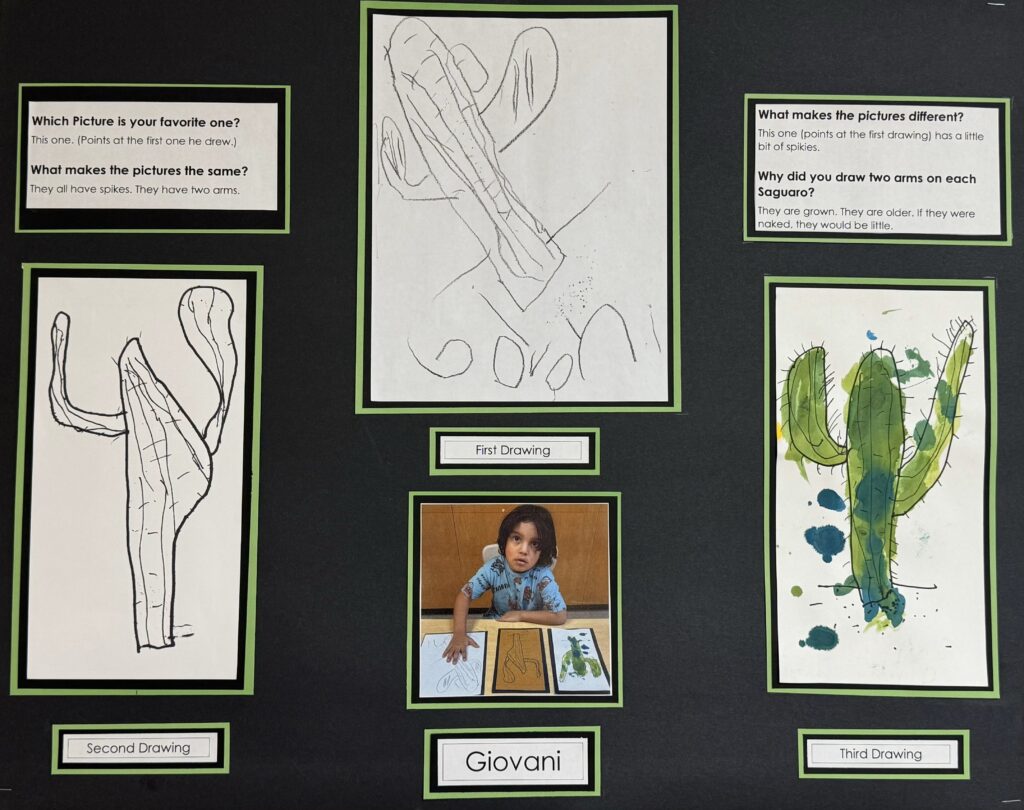
The children were asked if they thought van Gogh had ever painted a saguaro. The teachers researched this but found that there are no such paintings. They asked the children, “If van Gogh had painted a saguaro, what would it look like?” One child decided to create what he thought a saguaro would look like if van Gogh had painted it.
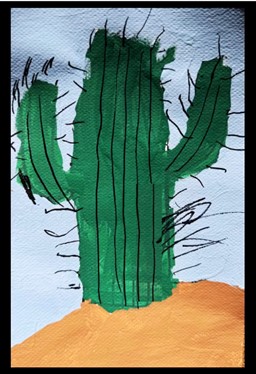
The Journey Continues
The teaching team is currently participating in a learning experience, Marks and Mosaics. Through their work with a consultant, the teachers were challenged to take small groups of children out into the desert and have them take pictures of the environment around them. Some children took pictures of the ground while others took images of the sky. This was done over several days and the weather was vastly different during those days, so the pictures were very different.
The teaching staff chose several images taken by the children to use as provocations for the children to create their own desert color palette to be used to create a desert mural.
The children began by mixing paint to match the colors in their images. They started with the sky portion of their mural and are currently working on the landscape portion.



Juliana Olivarez is the Education Coordinator for Child-Parent Centers Inc. (Head Start) in Tucson, Arizona. She has worked for Child-Parent Centers Inc. for 13 years. Juliana is as a coach and coordinator for Education Specialists, teaching teams, and Family Educators. Her work focuses on supporting teaching staff in their understanding and implementing of the Reggio-inspired tenets of CPC’s locally designed curriculum. As a coach, Juliana also supports the Education Coaches’ understanding of how to better support their staff around the Reggio-inspired tenets and implementation of the curriculum.

